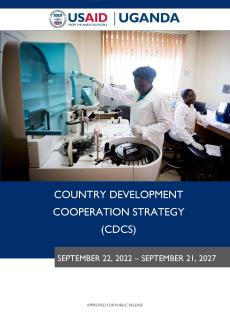Uganda’s development context is dynamic and both national and global events have shaped its operating environment. Uganda has made significant progress across many sectors in the past several decades. However, the operating context is facing several challenges, including the secondary impacts of COVID-19. Uganda’s complex operating environment has influenced not only USAID’s strategic priorities over the next five years but also our approach.
The goal of USAID/Uganda’s 2022-2027 Country Development Cooperation Strategy (CDCS) is “a partnership with the Ugandan people to put Uganda on a path to achieve its Vision 2040.”
In advancing this goal, USAID is committed to working toward ensuring that all Ugandans and refugees participate in and reap the benefits of Uganda’s growth on its quest to become a more modern and prosperous society. USAID will achieve its goal by focusing on three interrelated priority development objectives. DO1, Health Security Increased, represents USAID’s global push to plan for, mitigate, and respond to current and emerging health threats. DO1 aligns with the Government of Uganda’s NDPIII Pillar on human capital development. DO 2, Resilient Growth Enhanced, highlights USAID’s emphasis on addressing food security, climate change, economic growth, and access to education. DO2 aligns with the Government of Uganda’s private sector development priorities of agro-industrialization, human capital development, climate change adaptation, and natural resource management. DO3, Accountability Strengthened, represents the Agency’s focus on anti-corruption and strengthening democratic institutions and aligns with the Government of Uganda’s Governance and Security priority area. Every aspect of the results framework aligns with the 18 programmatic areas in the GOU’s NDPIII to achieve Uganda’s Vision 2040.
In this iteration of its CDCS, the people of Uganda are at the center of USAID’s approach; citizens and refugees are not simply recipients of assistance but instead, have the authority and agency to define their own development agenda and actively participate in its implementation. Local ownership is the driving force behind USAID’s envisioned programming for the next five years.
Document

